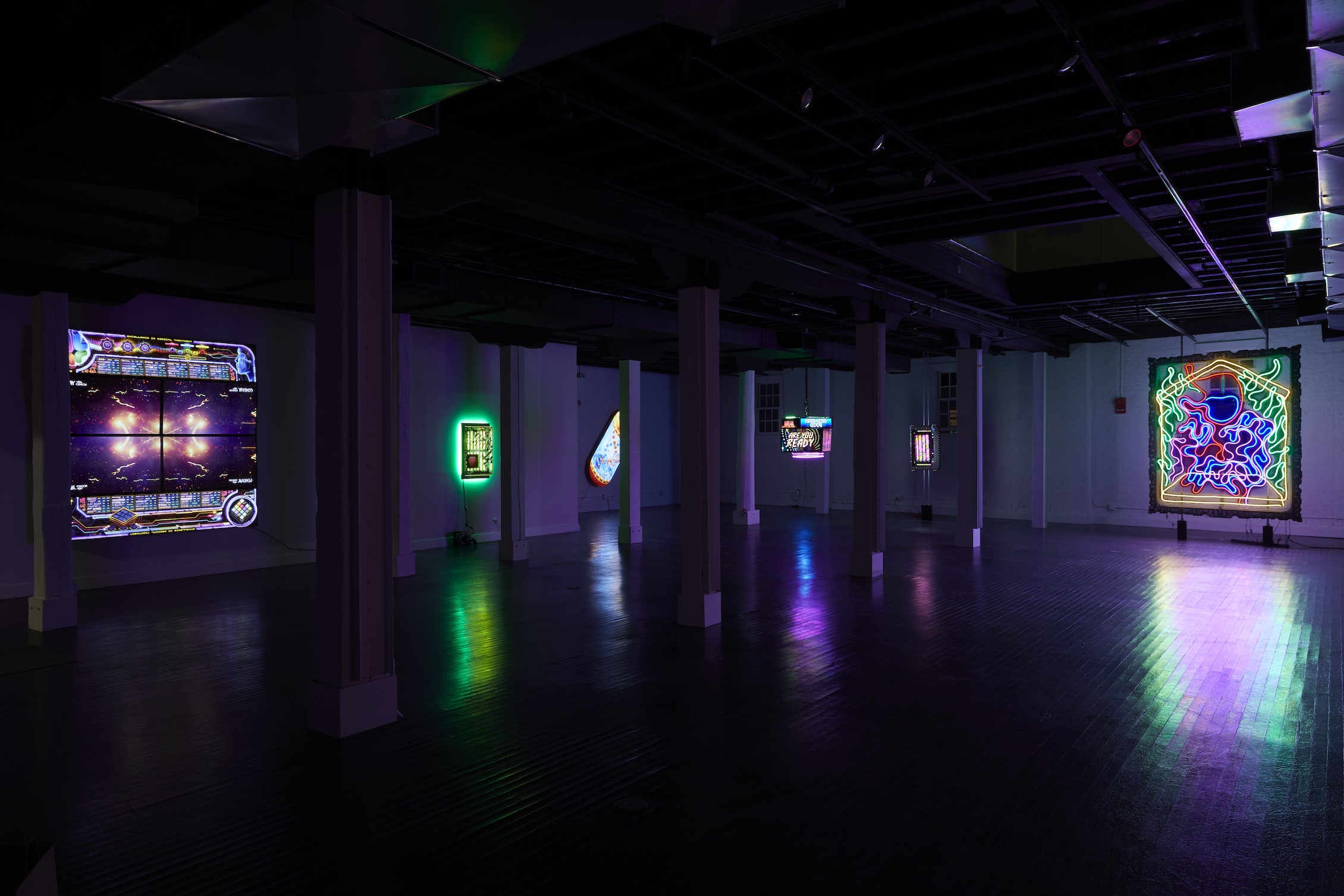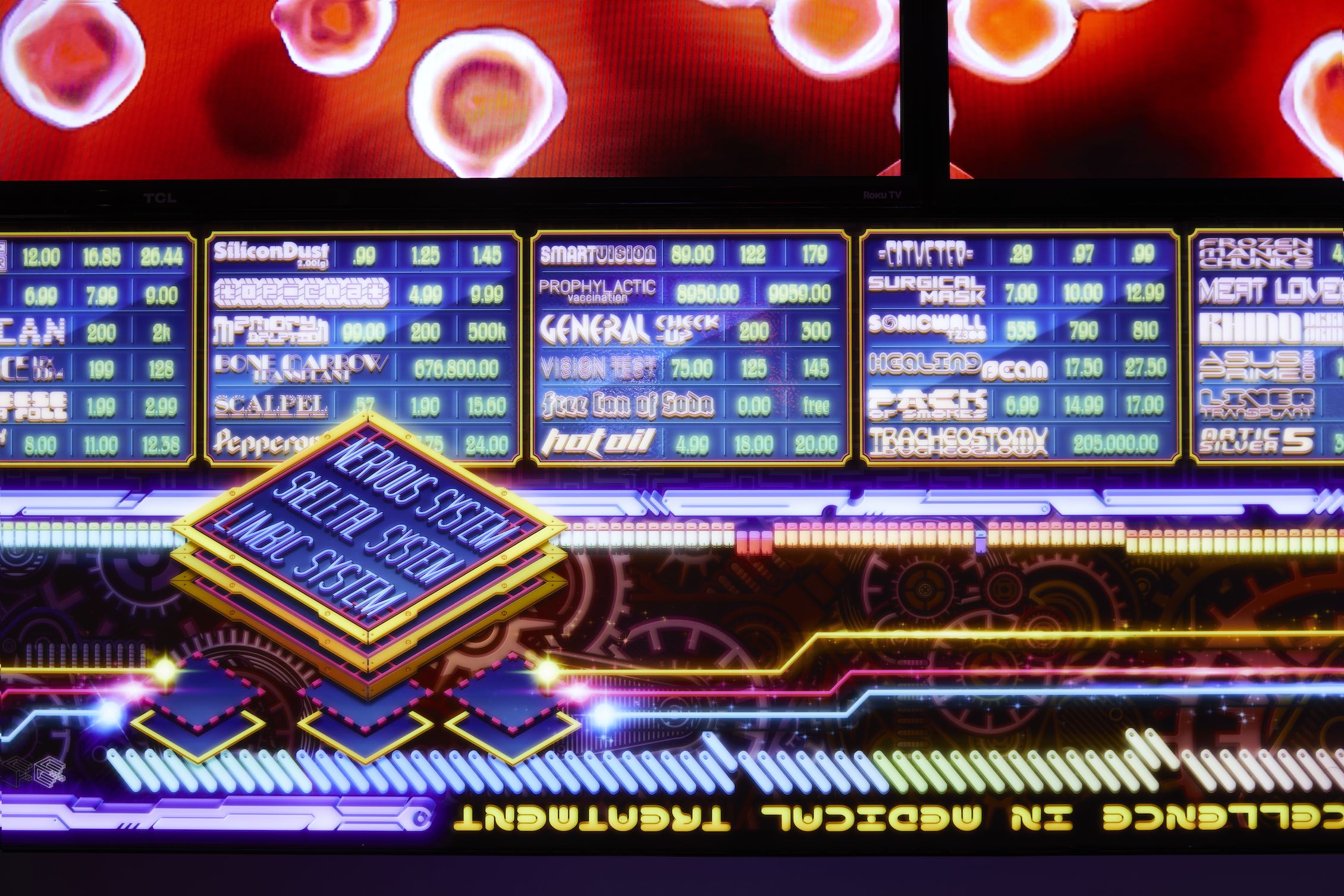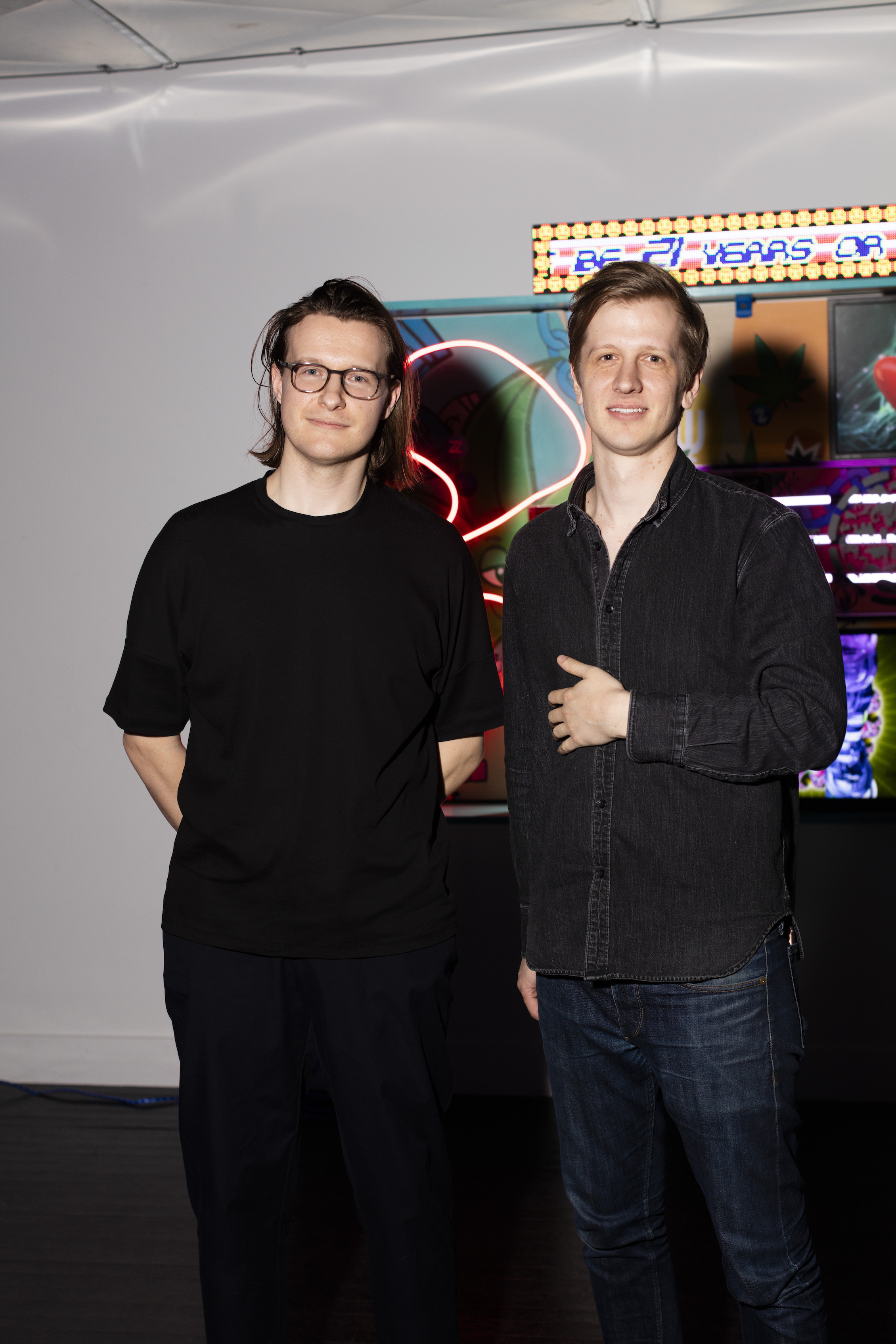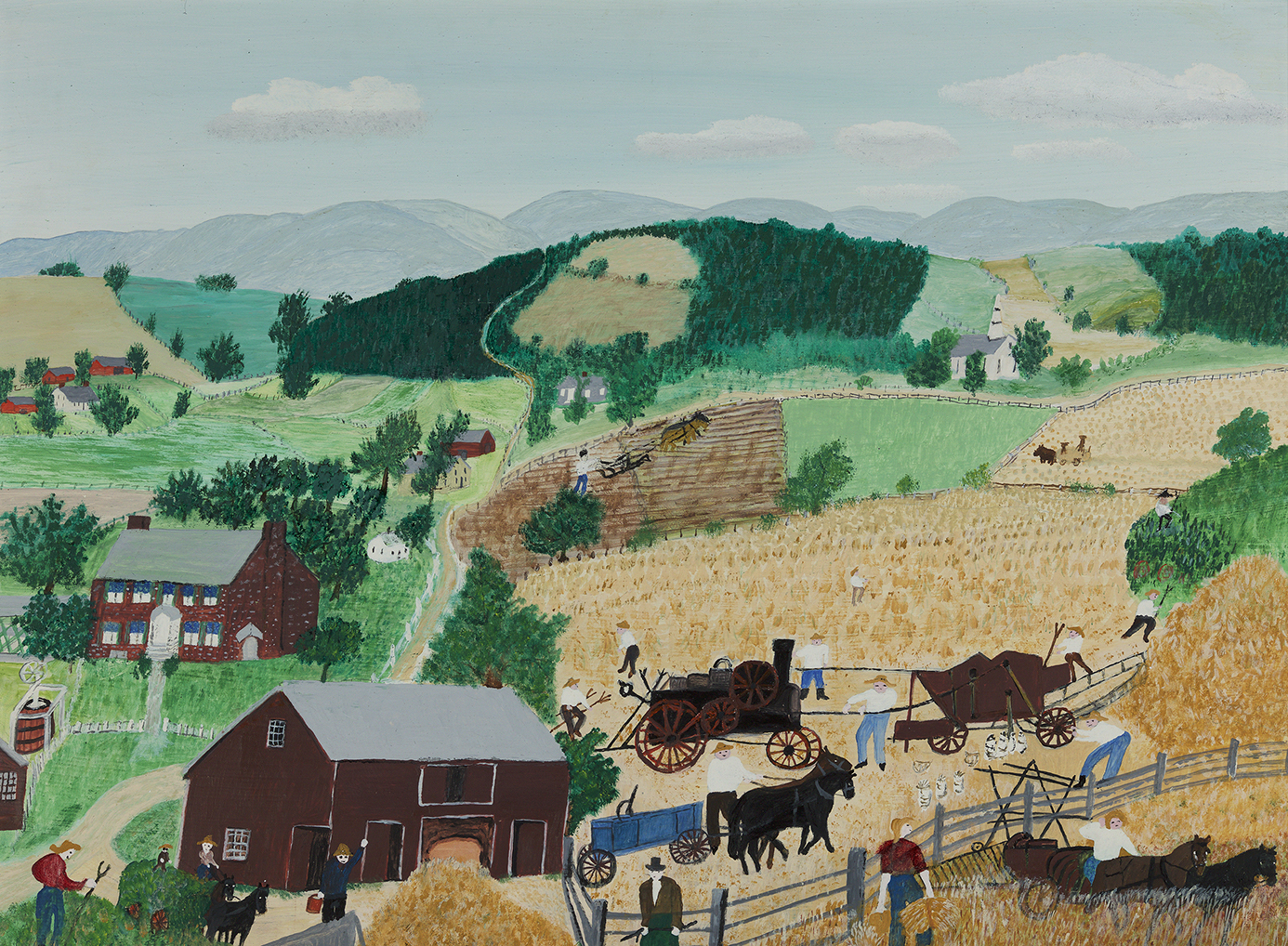
Todd von Ammon, curator and art dealer, is a trailblazer, to say the least—though he admits he bristles at the term curator. He understands himself better as a producer: someone who provides the platform for artists to showcase their projects, removes any obstacles, and helps share them with a wider audience. Once a part of the esteemed Team Gallery in Soho, New York, von Ammon has since expanded —he opened his own gallery, von ammon co., in Washington, D.C.’s Cady’s Alley Design District in early April, and his guest curated show at New York's Marlborough Gallery, APPENDIX, opens May 4, running concurrently with Frieze. Von ammon co. opened with Tabor Robak's solo exhibition Mental, a shockingly brilliant, neon-washed multimedia show exploring technology and the human brain (it's on view till May 25). Cultured sat down with von Ammon to learn more.
You recently opened your own gallery, von ammon co., in Washington, D.C., with an exhibit of digital art. Had you always wanted to open your own space? Opening my own shop has always been the plan, but seemed impossible in New York. The harshness of the retail environment spelled out a self-fulfilling prophecy: lease a small space, do a small show, and realize small returns. I have the utmost respect for my colleagues in New York who make it work and grow steadily over the years; for my purposes, it made sense to start with a large space with large shows by artists who have already shown their work internationally.
I met Philippe Lanier, whose family developed the Cady's Alley Design District, and took a 3,500 square foot space on the alley. This allows me to introduce major artists like Tabor Robak to the DC arts community at a full scale. I'm from a generation wherein technology permeates every level of thinking, so you can expect a program with significant emphasis placed on new and experimental approaches to making.

The subjects explored in Tabor Robak's show touch many of us who feel the pressures of technology and social media. What was putting that show together like? Tabor Robak is an artist with whom I've worked for years, and we also happen to be close friends. A familiarity with the technical aspects of a digital artist is crucial, and I can safely say I'm an expert at this by now. Tabor trained as a painter but honed his signature aesthetic working as a designer for large corporations. In this sense, he belongs to a lineage of artists who honed their craft in other environments—Rosenquist as a sign painter, Warhol as an illustrator, Richter as a social realist painter—and allowed the aesthetic to carry over into their art.
The work has the high-resolution luster of commercial advertising while communicating highly personal topics—this show's overarching theme being mental health in the 21st century. Since he and I are the same age, with similar personal narratives, this show draws from his experience and my experience—the collective experience of those who were raised parallel to the internet's learning curve. I wouldn't say I curated this show to any significant extent, and I wouldn't say that my role here is as a curator. I'm just here to grease the wheels and facilitate whatever Tabor hopes to achieve within the confines of the DC space.

What was curating the Marlborough Gallery show APPENDIX like? I’m interested in your contributions as a guest curator, and how it differs from what you do at your own space. I'm also curious about the difference between curating a group exhibition versus a solo one, for you. The work I do at von ammon co. isn't really curatorial; I also bristle at that term, "curator." It's a designation that's drifted far from its original meaning—which is to describe someone whose primary responsibility is the stewardship of precious objects in a museum setting. I find better analogies in the music business: my role as a gallerist is a producer—clearing away as many obstacles to allow an artist to fully realize her or his vision, whether that be funding production or simply ensuring that the show reaches its target audience. A group show like the one coming up at Marlborough is more like a mixtape: each group show I do is merely a personal expression of how I'm feeling and the work I care the most about. It's a far less analytic or academic approach than that of a museum curator.
How does your experience as an art dealer work with your curating career? Do they inform each other, in terms of developing your relationships with artists? To date, the vast majority of my shows have been in commercial galleries, so there's barely any separation between the two. I love galleries, especially young small ones. There's an incredible flexibility and immediacy to them. And since most small galleries are self-supporting, the work of selling art is always conjoined with the creative aspect. As I mentioned before, all of my experience is in commercial galleries, so this is the pace I'm familiar with.
[caption id="attachment_33035" align="alignnone" width="1386"] On view at APPENDIX at Marlborough Gallery: Grandma Moses, The Thrashers, 1954. Oil on pressed wood, 18 x 24 1/2 in. , 45.7 x 62.2 cm. Courtesy Private Collection, Grand Rapids, Michigan.
On view at APPENDIX at Marlborough Gallery: Grandma Moses, The Thrashers, 1954. Oil on pressed wood, 18 x 24 1/2 in. , 45.7 x 62.2 cm. Courtesy Private Collection, Grand Rapids, Michigan.
You were part of Team Gallery, and now you’ve established your own space, along with guest curating others. How does each process vary between environments, and do any projects from these pivotal stages of your career stand out? I think wherever I do a show, I'm inscribing something personal onto a pre-existing edifice. The Team Gallery edifice is informed by the aesthetic of José Freire, Team's owner, which is a sort of assemblage of his encyclopedic knowledge of film and his roots in the NYC downtown scene. Everything I did there paid tribute to his program somehow. The history of Marlborough dates back to the mid-1940s. Max Levai and his talented staff have done a fantastic job of building a contemporary program, so my upcoming show will include historical work as well as contemporary work that I hope will speak to their vibrant programming. Opening up my own public space has been an interesting challenge, as I'm inscribing my own history onto a blank slate, which is a first for me. Opening the space in DC has definitely been the highlight of my career so far.
Tabor Robak: Mental is on view at von ammon co. through May 25. APPENDIX is on view at Marlborough Gallery May 4 through June 15.



